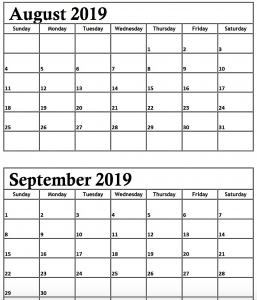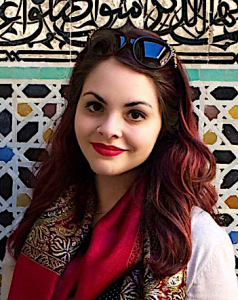 College admissions application season for 2019 officially began Aug. 1 when the Common App and Coalition Application both went live.
College admissions application season for 2019 officially began Aug. 1 when the Common App and Coalition Application both went live.
Nearly 900 colleges and universities use the Common App, and more than 140 distinguished schools comprise the Coalition Application.
College application season extends from now into early 2020, and it’s prime time for Jessica Magro, Director of College Consulting for Bulldog Tutors, which provides expert prep for the ACT, SAT and other admissions tests, as well as college admissions consulting and subject tutoring.
Rising high school seniors everywhere are immersing themselves in college applications and working on the required essays as the summer segues into the new academic year—but Jessica, who was admitted to all five Ivy League schools to which she applied, wishes they were focusing more strategically on something else.
First Priority: Getting the College List Right
“The thing I wish everyone was thinking about instead of the application process is their college lists,” Jessica says. “You would be really surprised how many people are excited, engaged and working on essays even as their college lists look thrown together. That college list is going to determine where you go to school more than any other piece of the process.”
What Jessica means by thrown together is the common scenario in which students create college lists filled with top schools and others that have some kind of cachet, name recognition or other vague appeal, without giving enough thought to whether the colleges and universities would actually be a good fit.
As a result, students enticed by superficial name value and recognition status spend time unwisely applying to schools they don’t really know if they would like and/or schools where their student profile and test scores may give them little chance of being accepted.
“All the time I hear students say, ‘I want to go to Harvard,’” Jessica explains. “I ask them why. They almost never have an answer other than ‘it’s Harvard.’” That impulse fails to take into account the reality that all Ivy League schools are excellent but each has its own distinctive personality.
“You can’t apply to a million schools, so pick the ones that actually align with your interests,” Jessica says. “At this point in the process it’s still not too late to realign your college list, as there’s still time to do research before school starts again.”
If that doesn’t happen as the fall term progresses, it will be time to engage a seasoned college admissions professional like Jessica to get the college list straightened out.
College Admission Application Types & Deadlines
Assuming you have a solid college list, the next issue involves researching the deadlines for your preferred schools and deciding how to apply.
Some schools engage in rolling admissions, which means they begin accepting applications when the process opens Aug. 1 and make decisions as applications are received, rather than waiting until a set deadline to begin evaluating students.
Michigan State, Penn State, and Texas A&M are examples of well-known high-profile schools with rolling admissions. Once the application window opens, they continuously accept students until the class is filled.
One advantage of rolling admissions is students who apply early are judged strictly on their merits and not in comparison to hundreds or thousands of other applicants—and students receive a decision approximately six weeks after applying, which could potentially mean being accepted to a dream school before senior year of high school really gets rolling.
Other options include Early Decision and Early Action. Most schools offer one or the other. The most common application process is regular admission, for which the deadlines are generally in late December or early January, with acceptances arriving in the late winter and spring.
Early Decision vs. Early Action
Early Decision is a binding process, and students can only apply Early Decision to one school.
If you apply and are accepted, you must attend that school. You can only uncommit if the school offers an aid package that isn’t sufficient. Schools that offer Early Decision usually give a tentative aid package on acceptance but don’t detail the final package until the spring.
“I tend to be very wary of Early Decision when financial aid will be an important factor,” Jessica says.
The deadline for applications is the beginning of November and students typically receive a decision by December.
Early Action is not binding, and there’s no restriction. It simply means you apply early and get a decision early. You don’t have to commit until the normal deadline in the spring. Schools offer a tentative aid package upon acceptance and the full package in the spring.
The application deadline for Early Action is in early November.
Some colleges and universities offer an option called Single-Choice Early Action, which means you can only apply to one school through Early Action, though you can apply to other schools through rolling admissions and regular admissions.
Yale, Harvard, and Stanford are among the top schools offering this option.
Yale explains the benefits on its website: “If you would like an admissions decision by mid-December, you may apply under Yale’s Single-Choice Early Action program (otherwise known as Restrictive Early Action). The program is like other non-binding plans in that candidates who are admitted early need not respond to the offer of admission until May 1, and may apply to other schools for Regular Decision. Being admitted to Yale early would, for example, still allow you to compare offers of financial aid in the spring.”
Generally, admission rates are higher for Early Decision, Early Action, and Single-Choice Early Action, making them a good option for both students with strong profiles and test scores and students who might meet a school’s benchmarks for admission but don’t greatly exceed them.
The SAT, ACT and Application Timing
A lot of high school seniors will end up taking the SAT or ACT again in the fall in their quest to achieve their highest scores.
Some schools say the last tests they’ll accept for the application are the ones administered in October or November, and Jessica cautions, “October is the last safe test to take if you want to apply early action or early decision.”
Students planning to apply regular decision can take the SAT through December, and the January ACT.
The Application Help Students Need
“I can be involved as much or as little as they like,” Jessica says of her consulting work with students on the college application process. “In an ideal world, I would love to see everything before anything is submitted.”
Students tend to come to her most often for guidance on the Common Application essay. The minimum length is 250 words and the maximum length is 650 words. “You write a few hundred words, but they need to be the right words,” Jessica says.
She prefers to see students before they start writing the essay, so she can effectively guide them in the right direction, as the college application essay is a very different style and format than other essays students have written. Also paramount is understanding the audience; admissions officers may read 1,000 essays in one season.
“Sometimes my best writers have the most trouble,” Jessica observes.
Grades, test scores, the essay, and the student profile section are the most important factors on the Common Application. Most schools have supplements that can range from a couple short answer questions to additional essays.
As vital as it is to help students write winning essays, Jessica wishes students would work with her to focus more on the awards and activities section of the application.
She finds herself often enough saying to students, “You have perfect grades and perfect SAT scores, but I’m sorry to tell you your activities are just not there.”
If she begins working with a student when her or she is a freshman or rising sophomore, there’s time to inspire them to undertake initiatives and volunteer efforts that will build their profile. “It’s generally too late by the time I see them for applications to significantly alter it, other than working on their fall schedule,” she says. “It’s too late to go back to freshman year.”
“Sometimes I say, ‘Everything else is there except your SAT score so you need to take it again,” Jessica says. “If there grades and their activities are in line with where their test scores are, I would give them schools that align with their test scores.”
For students with the right admission test scores, a good profile and impressive activities, the focus between now and December should be researching and demonstrating interest by registering for a preferred school’s big events.
Back to Basics: Perfect That College List
“Finding the best fit is really the most important part of this whole process,” Jessica says in stressing the absolute importance of fine-tuning the right college list before forging ahead with the application process.
She often encounters students whose draft college lists confuse her. “I look at the list and say, ‘Hey these two schools are very, very different. What do they have in common to you?’”
Students don’t often have a good answer, having listed Yale, for example, simply because of its reputation for excellence. “Everyone at Yale is really, really excellent,” Jessica says. “Since there are so many qualified people at Yale, it can be hard to get opportunities. There’s something to be said for being a bigger fish in a smaller pond.”
Conversely, some people enjoy the opportunity to be an anonymous face in a large lecture.
“Be in an environment that makes you want to thrive and be engaged in your studies,” Jessica says. “It’s all about making the most of the opportunities when you get there, and making sure when you’re get there you’re happy.”
To realign a college list, she discusses goals and priorities with students, and also talks about things they may not have considered, such as the personality of a school, whether its religiously affiliated, or single gender, or has a sporty vibe, or artsy vibe.
When that student comes back for the next session, Jessica says, “I’ll have built them a college list that is distributed and has schools they’ll get into and will be a good fit for.”
In ideal world, students would then visit some of the schools on the list and see if they actually like them. They might return and say, “I thought I would like this but I don’t, so let’s revise the list.”
If visits aren’t possible, Jessica gives students resources about schools on her realigned list and says, “I think these are a great fit for you. Do some homework and see if you agree.”
The next question is: “Do you like any of them so much you want to apply early action or early decision?”
Snapshot: College Applications, August 2019
“Most people are starting to think about the Common App. Maybe they’ve made an account, maybe  they’ve perused it,” Jessica says of where students stand as the application process opens in August. “People are focused on taking their SATs or ACTs again, but potentially that’s not the most vital thing to think about in August.”
they’ve perused it,” Jessica says of where students stand as the application process opens in August. “People are focused on taking their SATs or ACTs again, but potentially that’s not the most vital thing to think about in August.”
“If a person came in now with college list that’s fairly done, I would encourage them to do as much of application done before school starts, to have the common app done and submitted before school starts, and to begin some of supplementals.”
Potentially, well-prepared students working with Jessica to fine-tune the application process could be done by early to mid-September. “We could be working together as long as January, but ideally we would be done much sooner,” Jessica says.
The next step is preparing for interviews, which most schools do, but not all. In general, Early Decision interviews take place in November, or early December. Regular admission interviews are typically scheduled for January or February.
“There are so many different factors involved in the college application process that almost all students need some level of expert guidance,” Jessica says.
************
 With offices in New Haven and Guilford, Bulldog Tutors provides the highest quality private tutoring, test prep, and college admissions counseling in Connecticut. Bulldog’s Ivy League-educated tutors have achieved top scores on every exam that they teach and take a personalized approach to instruction that targets students’ weaknesses and helps them succeed on admissions tests and in subjects where they may have been under-served by traditional educational settings.
With offices in New Haven and Guilford, Bulldog Tutors provides the highest quality private tutoring, test prep, and college admissions counseling in Connecticut. Bulldog’s Ivy League-educated tutors have achieved top scores on every exam that they teach and take a personalized approach to instruction that targets students’ weaknesses and helps them succeed on admissions tests and in subjects where they may have been under-served by traditional educational settings.
The New Haven office is located at 142 Temple Street, 3rd Floor, and the Guilford office, which may be reached at (203) 423-0592, is located at 2257 Boston Post Road, Suite B.
For additional information, call the New Haven office at (203) 562-1000, or see the Bulldog Tutor website, https://bulldogtutors.com.

